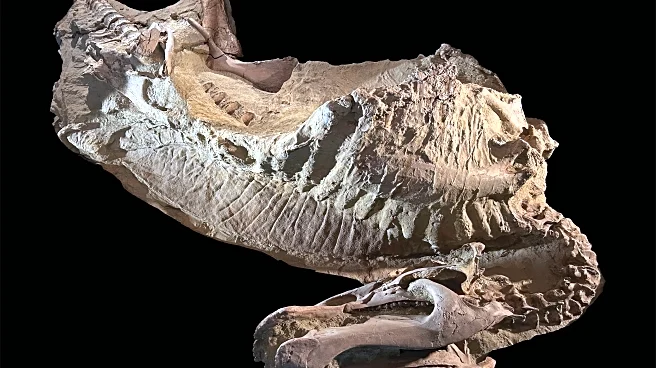What's Happening?
An international research team has discovered a mutation in the CPD gene that plays a significant role in a rare inherited form of hearing loss. The study, published in the Journal of Clinical Investigation, involved scientists from the University of Chicago,
the University of Miami, and several institutions in Turkiye. The CPD gene, known for modifying proteins, also affects the inner ear, leading to sensorineural hearing loss (SNHL), a condition causing permanent deafness. The researchers identified the genetic mechanism behind this effect and proposed two potential treatment strategies. The study focused on individuals with a rare combination of CPD gene mutations, but it may have broader implications if single mutations are linked to age-related hearing loss.
Why It's Important?
This discovery is significant as it not only identifies a new genetic cause of deafness but also offers potential therapeutic targets. The findings could lead to new treatments for those affected by this rare form of hearing loss, potentially improving the quality of life for many individuals. The research highlights the importance of genetic studies in understanding and treating hereditary conditions. Moreover, the study's use of fruit fly models to explore treatment options underscores the value of such models in neurological research, potentially paving the way for repurposing existing drugs to treat rare diseases.
What's Next?
The researchers plan to continue their investigation into how nitric oxide signaling functions in the inner ear's sensory system. They aim to determine the prevalence of CPD mutations in larger populations and assess whether these mutations contribute to other forms of hearing loss. This ongoing research could reveal whether CPD mutations are a risk factor for other types of sensory neuropathy, potentially leading to broader applications of the findings in treating hearing loss.
Beyond the Headlines
The study exemplifies the potential of repurposing FDA-approved drugs for treating rare diseases, offering a cost-effective and expedited path to new therapies. It also highlights the collaborative nature of modern scientific research, involving multiple institutions across different countries. The findings could stimulate further research into the genetic basis of other sensory disorders, potentially leading to breakthroughs in understanding and treating various neurological conditions.














